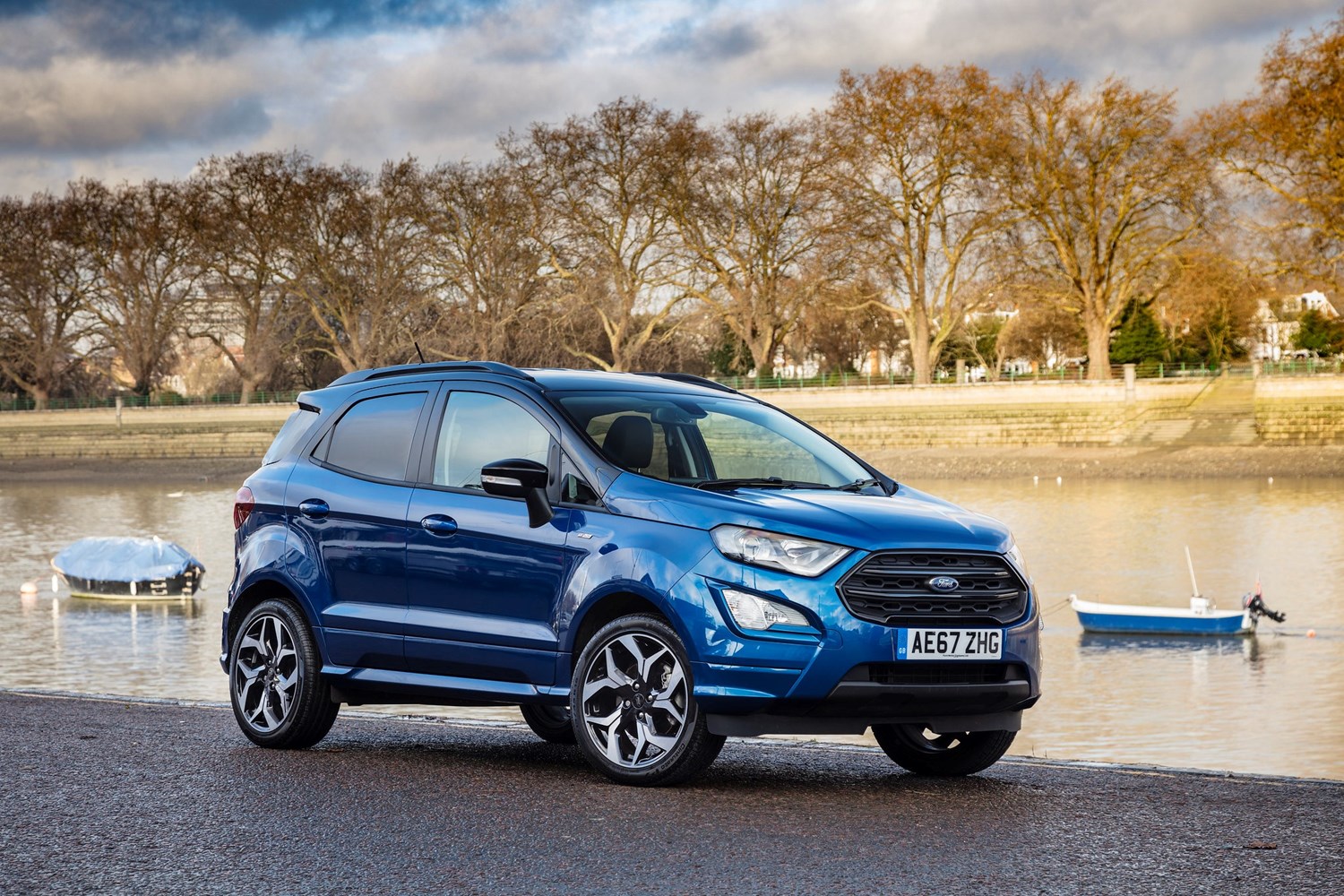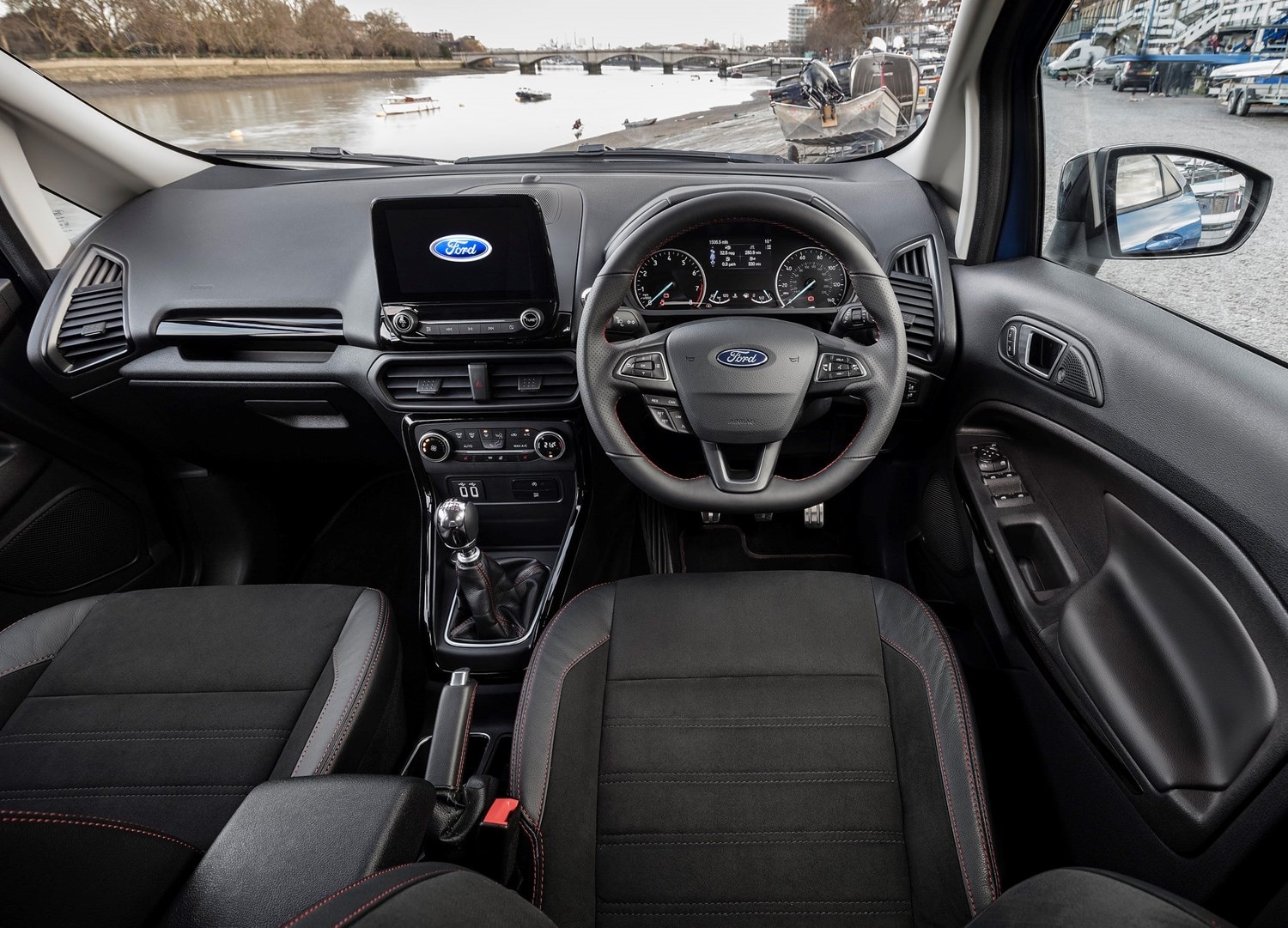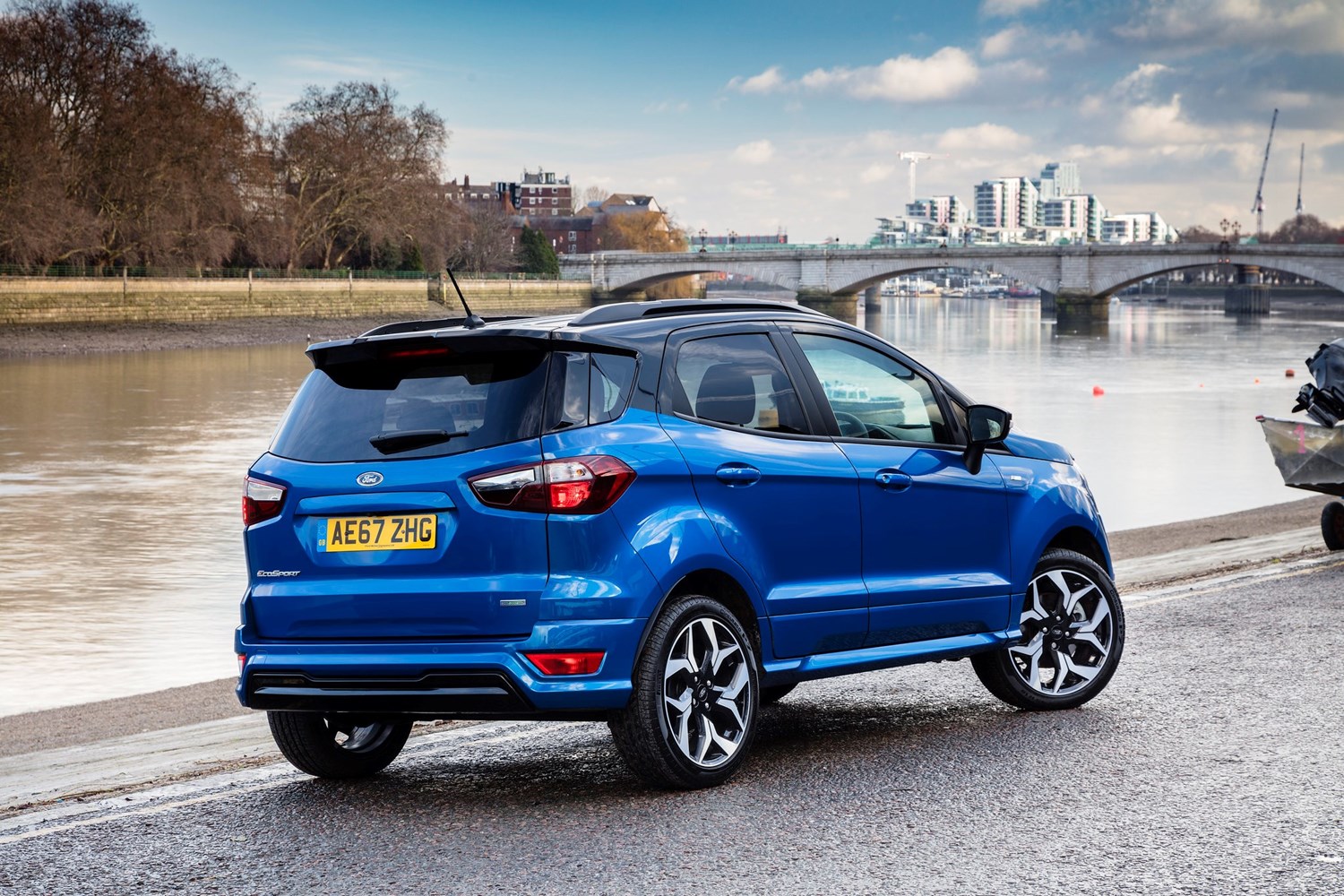Latest model
Ford was quick to realise the Ecosport’s lack of suitability for UK buyers, and was quick to update it – first in 2015 and then more comprehensively at the start of 2017.
The latter was the most recent update, and was certainly a big step forward compared to its predecessor. Firstly with its styling, which now looks fresher and more mainstream – helped by the introduction of a sporty-looking ST-Line trim level. Annoyingly the rear-hinged tailgate remains, though.
Big changes can also be seen in the cabin, which now mirrors that of the Fiesta and Focus, as you get a much cleaner layout and eight-inch touchscreen that is easy to use. You also get more tech than before, as well as a new 1.5-litre diesel engine that’s far more efficient than the one it replaces.
Value for money
Prices for the Ecosport start from £18,695, and that’s quite competitive in this crossover class, as it’s a similar price to rivals such as the Seat Arona and Renault Captur – if more expensive than the Nissan Juke and MG ZS. Entry-level versions provide most of the kit you need, but if you want cooler looks, try the top-spec ST-Line, which is available from £21,000.
In terms of used values, the cheapest Ecosports were available from £6,000 at the time of writing, which offers good value. It’s worth trying to find the much-improved 2017 facelift model, though, which looks much better and has a far more pleasant interior. These are available from around £10,500. That said, there are big savings available off nearly-new models – we saw a delivery mileage example for sale for £14,000 – a huge £4,500 off the price of a new one. In that case, it’s definitely worth looking at the used market to get the best value for money.
Looks and image
When the Ecosport originally debuted in 2014, it’s safe to say it wasn’t the most stylish of choices. With its boxy uninspiring styling and odd spare wheel mounted on the tailgate, it looked old-fashioned and bland next to bold rivals like the Nissan Juke and Renault Captur.
The 2017 update went a long way in addressing this, though – not least with the introduction of the ST-Line trim levels, which gains sporty looks and a cool two-tone styling. While still not looking as fresh as some competitors, the latest Ecosport is the most appealing it’s ever been. It’s a similar story on the cabin, which is light years better than before – helped by a much cleaner layout, higher-quality materials and the standard-fit eight-inch touchscreen.
Unfortunately, the driving experience hasn’t got much better. While Ford’s excellent 1.0-litre EcoBoost petrol engines help matters, the rest of the experience is disappointing – not least because Ford is known for its fun cars. The steering is light and there feels like there’s little communication between the wheel and tyres, while the top-heavy design leads to loads of body roll. On the plus side, if you’re looking for a high driving position, you’ll like the Ecosport, which feels more like an SUV than plenty of its rivals.





